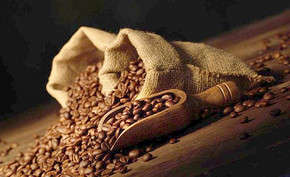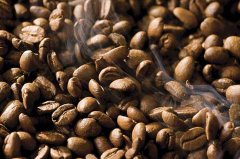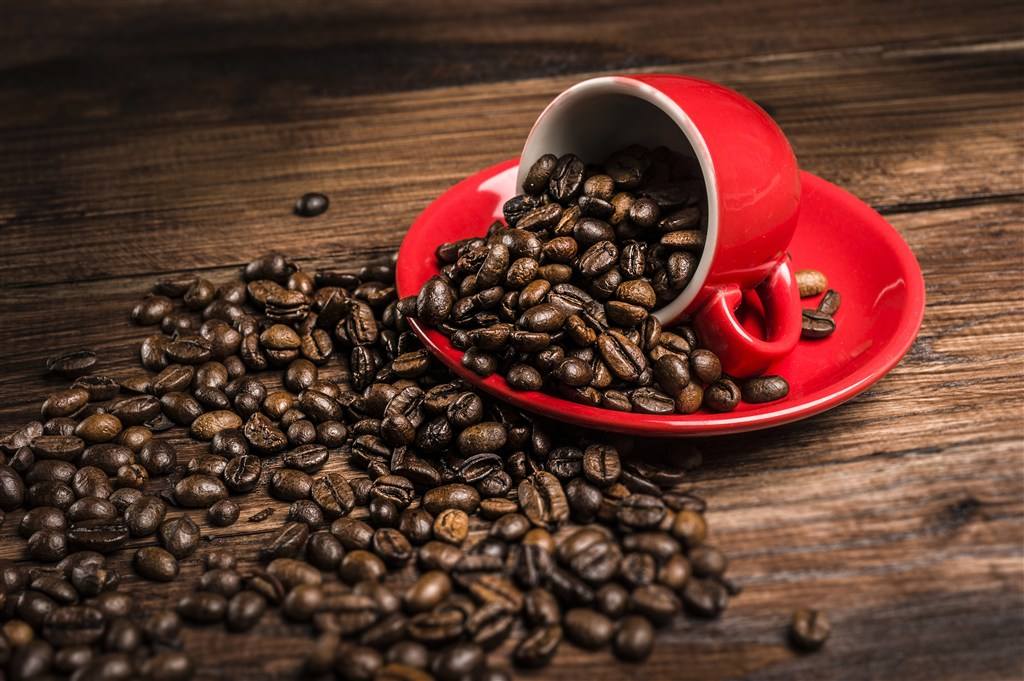Panama Coffee Bean Varieties and Region History
Follow the caf é (Wechat official account vdailycom) and found that Beautiful Cafe opened a small shop of its own.
Brazilian variety of San Ramon san ramon- iron pickup
Bourbon-bourbon coffee plants produce 20-30% more coffee than typical, but have a smaller harvest than most coffee varieties. Bourbon coffee has a less conical shape than a typical plant, but has more secondary branches. The angle between the branch and the main stem is small, and the branch points of the main stem are dense. Broad and wavy on the edge of the leaf. The fruit is relatively small and dense. Cherries ripen quickly and risk falling off in a strong wind or rain. The best result of bourbon coffee is to achieve the need between the feet. The quality of the cup is excellent, similar to the typical.
Katula-Caturra is a mutation found in bourbon coffee in Brazil. It is a mutant with high yield and good quality, but requires a lot of care and fertilization. It is a short, thick core with many branches. It has wavy boundaries similar to coffee bourbon leaves. It is well adapted to almost any environment, but preferably with 2500-3500 mm annual precipitation between 1500-5500 feet. At high altitudes, the quality increases, but the yield decreases.
Kaduai-catuai is produced by the high-yield coffee factory from the intersection between New Mondou and Caturra. Plants are relatively short and form close angles and main branches with lateral branches. A branch of fruit that is not easy to fall off, which is a favorable area for strong winds or torrential rain. Catuai also needs adequate fertilization and care.

Coffee varieties of Panamanian coffee beans
Some varieties of coffee are produced in the Chiriki Heights of Panama. The main choices are the quality and yield of coffee beans and the weather and plague resistance of plants. At present, Panamanian boutique coffee mainly cultivates the following varieties:
Geisha- (Arabica variety, sometimes translated as geisha coffee) Rose Summer Coffee plant is called long bean, or coffee cherry, Panama Rose Summer Coffee is bright honey and citrus flavor, offering excellent taste and cup testing characteristics. Panamanian Rosa Coffee has soft and strong floral and jasmine aromas and unique although subtle acidity, balance, bright white wine and berry, mango, papaya, and orange flavors. The aftertaste provides a distinct bergamot feel. The rose variety was first discovered in 1931 in southwestern Ethiopia and was first introduced to Panama from Costa Rica in 1963.
Typica- this is the basis of many kinds of coffee. Like other small-grain coffee varieties that have been developed, the Ironpickup coffee plant has a conical one with a major vertical trunk and sub-vertical growth at a slight tilt. Typically, a tall plant is 3.5-4 meters high. The lateral branches form a 50-70 °angle and a vertical trunk. Iron pickup coffee has a very low production, but there is a cup to test excellent quality.
Introduction to Panamanian coffee
Our Panamanian coffee bean farm is located in the highlands of Chiriki province, in a province in western Panama. Chiriki-meaning Moon Valley is in the former indigenous community of Colombia, where it lives-the language borders the Pacific Ocean, in just three hours' way from the Caribbean (Bocas del Toro). Thus on the border with Costa Rica, the canal is a seven-hour drive from Panama City. Chiriki is one of the richest provinces in Panama because of its climate and fertile soil. Cattle activities, horse farming, flower farming, trout fishing, banana plantations, and long-established vegetable production and coffee take place in granaries in Chiriki, Panama.
Chiriki Heights is where our Panamanian coffee bean farm is located by two main areas: Bockett and Volcano á n-candela. The picturesque town of Poggett has been in the spotlight of tourism for the past decade because of its spring-like weather, cost of living, and many available activities in the area. However, the essence of the real Bockett is the discovery in the century-old tradition of coffee production: in fact, Poggett is very proud to have some of the most unique coffee ñ Bockett OS in the world.
The volcanic area of Kendra is known as the granary of Panama, and most of the food consumed at home comes from the region and nearby mountain corners.
Tourism is also an important part of the economy of the plateau, and coffee is one of the most popular tourist attractions here. Usually, coffee tours include visits to Panamanian coffee plantations and processing plants, usually with a can of coffee. The region is also one of the country's major flower suppliers.
The company is a dormant volcano and the volcano is located between the Poggett Kendra region. At about 11400 feet above sea level, the company is the highest point in Panama.
Under fertile conditions around the Balu Volcano region, normal rainfall and appropriate heights are a key factor in the success of coffee production: high-quality coffee beans are nourished in volcanic soil with rich nutrients, sufficient water vapor and clouds, and develop rich production with deeper flavors.
Mountains are also of high ecological importance. The surrounding cloud forest is home to hundreds of species of plants, birds (such as cuckoos), mammals and insects. A protected area is called the Baru Park International component of La Amistad (pilA). Jointly managed by Panama and Costa Rica, La Amistad is inhabited by diverse and complex flora and fauna, reflecting the ecological importance of Panama, the path between the northern and southern United States.
Important Notice :
前街咖啡 FrontStreet Coffee has moved to new addredd:
FrontStreet Coffee Address: 315,Donghua East Road,GuangZhou
Tel:020 38364473
- Prev

Historical Origin of Panamanian Poket Flower Butterfly Coffee beans Flavor description of planting area
Following caf é (Wechat official account vdailycom) found that Beautiful Cafe opened its own small shop in Panamanian Coffee. Old Bean microbean2016 April 19, 2007 Twitter Facebook Google+ Pinterest Tumblr since the early days, Panama's coffee industry depends on Ngbe-Bugl Ngabe-Burger Panamanian native Indians.
- Next

Description of coffee bean flavor and taste in Hartmont Manor, Panama
Following Cafe Review (Wechat official account vdailycom) found that Beautiful Caf é opened a small shop of its own to describe Panamanian coffee with no objection. This small country has one of the most competitive coffee estates in the world with the highest average transaction price, and the important reason for the unique quality of Panamanian coffee is its microclimate. Panama and
Related
- Detailed explanation of Jadeite planting Land in Panamanian Jadeite Manor introduction to the grading system of Jadeite competitive bidding, Red bid, Green bid and Rose Summer
- Story of Coffee planting in Brenka region of Costa Rica Stonehenge Manor anaerobic heavy honey treatment of flavor mouth
- What's on the barrel of Blue Mountain Coffee beans?
- Can American coffee also pull flowers? How to use hot American style to pull out a good-looking pattern?
- Can you make a cold extract with coffee beans? What is the right proportion for cold-extracted coffee formula?
- Indonesian PWN Gold Mandrine Coffee Origin Features Flavor How to Chong? Mandolin coffee is American.
- A brief introduction to the flavor characteristics of Brazilian yellow bourbon coffee beans
- What is the effect of different water quality on the flavor of cold-extracted coffee? What kind of water is best for brewing coffee?
- Why do you think of Rose Summer whenever you mention Panamanian coffee?
- Introduction to the characteristics of authentic blue mountain coffee bean producing areas? What is the CIB Coffee Authority in Jamaica?

